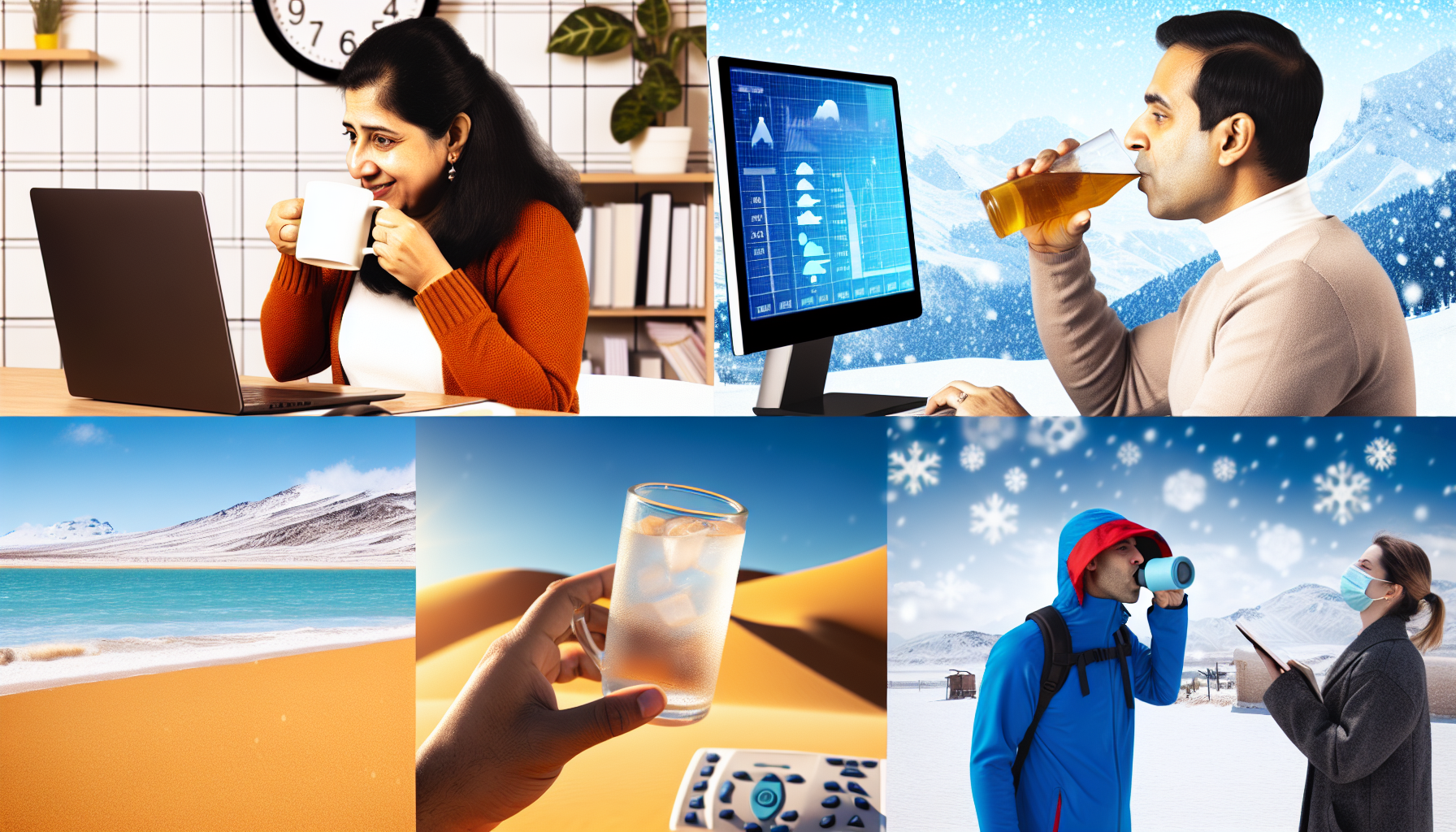How to Stay Healthy While Working Remotely from Different Climates
The life of a digital nomad is filled with excitement and adventure, bouncing from one picturesque locale to the next while working remotely. Yet, the diversity of climates—ranging from tropical beaches to arid deserts—presents unique challenges to maintaining your health. Navigating these obstacles is essential for staying productive and enjoying your nomadic journey to the fullest. Let’s explore how to harmonize work, travel, and well-being, no matter the weather.
Key Takeaways:
- Stay hydrated according to climate needs.
- Adapt your diet to local food availability and climate.
- Continue a consistent exercise routine.
- Protect skin and body from extreme weather conditions.
- Manage stress through mindfulness and relaxation techniques.
Hydration: The Unsung Hero
Staying hydrated is crucial, but hydration needs vary significantly depending on the climate. In hot and humid conditions, your body loses fluids faster, requiring you to drink more water than you might in cooler, dry settings.
An effective way to stay hydrated is to always carry a reusable water bottle and set periodic reminders on your phone to take a sip.
Personal Example: While working in Bali, I invested in a high-quality, insulated water bottle that kept my water cold throughout the day. This small step made a big difference in maintaining my hydration levels, even in the intense heat.
Adapt Your Diet to Local and Seasonal Foods
Diet plays a vital role in how you feel and perform. Embrace the local cuisine and its seasonal produce, which are often designed by nature to meet the climatic demands of the environment.
In tropical climates, opt for hydrating foods like fruits rich in water content—think watermelon, cucumber, and oranges. In colder climates, indulge in hearty soups and stews that provide warmth and sustenance.
Expert Quote: “Eating seasonal, local foods can help you adapt more effectively to your current environment,” says nutritionist Sarah Anderson.
Consistent Exercise Routines for Varied Climates
Maintaining an exercise routine while moving between climates can be tricky but not impossible. Adapt your workouts to fit the conditions. In hot weather, consider swimming or exercising early in the morning to avoid peak heat. In cooler climates, outdoor activities such as hiking or running can be invigorating.
Personal Example: While stationed in a chilly mountain village in Switzerland, I kept warm and active by taking morning hikes. It was both a great workout and an opportunity to soak in breathtaking views.
Skin and Body Protection
Your skin bears the brunt of climate changes. From sunburns in tropical paradises to windburns in high-altitude regions, it’s critical to protect your skin.
Invest in a quality sunscreen with at least SPF 30 for sunny destinations and a good moisturizer for dry, cold climates. Don’t forget to dress appropriately to shield your body from the elements.
Personal Reflection: During a stint in the Australian Outback, I overlooked the power of the sun and ended up with a nasty sunburn. Now, sunscreen is my best travel companion, irrespective of the destination.
Stress Management with Mindfulness
Travel, work, and health—juggling these can be stressful. Incorporate mindfulness practices like yoga or meditation into your daily routine to manage stress effectively. Set aside specific times for these activities, making them a non-negotiable part of your day.
Expert Quote: “Mindfulness practices can drastically improve your overall well-being, making it easier to adapt to changing environments,” notes wellness coach Emma Richards.
Climate Comparison Table
| Climate | Key Challenges | Health Strategies |
|---|---|---|
| Tropical | Dehydration, sunburn | Hydration, sunscreen, light clothing |
| Temperate | Variable weather | Layered clothing, seasonal foods |
| Dry (Desert) | Heat, dry skin | Hydration, frequent moisturization |
| Cold (Arctic) | Hypothermia, dry air | Warm clothing, hearty diet, indoor workouts |
Living or Experiential Tips
- Join Local Activities: Engage in local physical activities such as beach volleyball in tropical areas or skiing in snowy regions.
- Mindfulness Apps: Use apps like Headspace or Calm to integrate mindfulness into your daily routine easily.
- Local Markets: Visit local markets regularly to stock up on fresh, seasonal produce.
- Sleep Smart: Ensure you have the right bedding and sleepwear to suit the climate, improving sleep quality.
Remember, staying healthy is the key to enjoying your journey. Hydrate, eat well, exercise, protect your skin, and manage stress to keep your digital nomad lifestyle both productive and pleasurable.
If you are keen to dive deeper, here are some excellent resources:
- World Health Organization’s Tips for Travelers
- Nutrition Matters for Remote Workers
- Skin Care for Different Climates
FAQ
Q: How much water should I drink in hot climates?
A: Aim for at least 3 liters a day. Remember, the more you sweat, the more water you need to replenish.
Q: Can I maintain my vegan diet while traveling?
A: Absolutely! Research local dishes ahead of time and scout out markets for fresh, plant-based foods.
Q: How can I manage jet lag while working remotely?
A: Adjust your sleep schedule a few days before traveling to match your destination’s time zone and stay hydrated.
Keep these tips in mind, and enjoy your healthy, adventurous digital nomad life!
